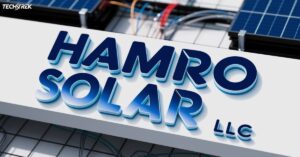Solar energy has become increasingly popular among homeowners seeking to reduce their carbon footprint and save on energy costs. As technology advances and prices decrease, more people are considering the switch to solar power for their homes.
This comprehensive guide will walk you through everything you need to know about going solar, from understanding how solar panels work to navigating the installation process. We’ll cover the benefits, considerations, and steps involved in adopting for your home.
Whether you’re just starting to explore solar options or are ready to make the leap, this guide will provide valuable insights to help you make informed decisions about powering your home with clean, renewable energy.
Understanding Solar Energy
Solar energy harnesses the power of the sun to generate electricity for homes and businesses. This renewable energy source has gained significant traction in recent years due to its environmental benefits and potential cost savings.
At its core, solar energy systems use photovoltaic (PV) panels to convert sunlight into usable electricity. These panels are typically installed on rooftops or in open areas with ample sun exposure.
How Solar Panels Work
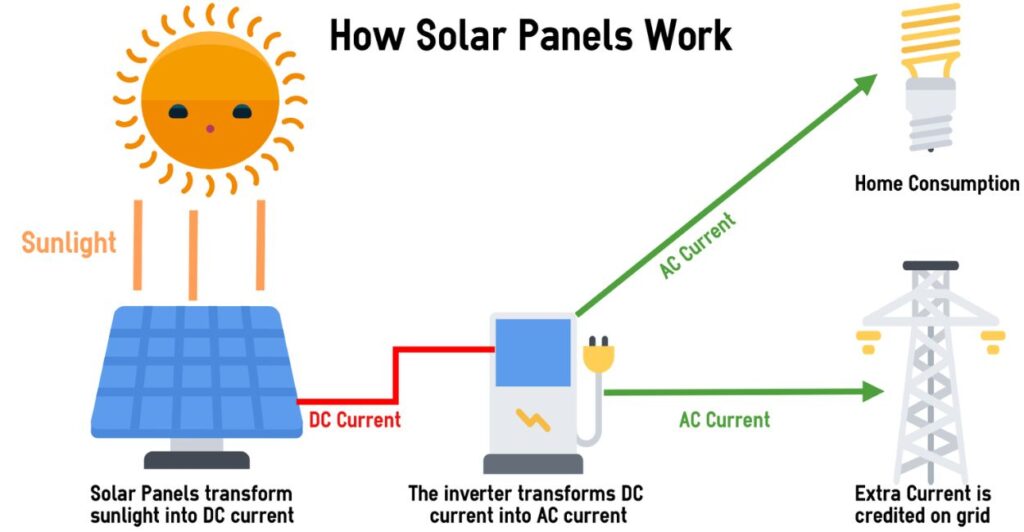
Solar panels consist of multiple photovoltaic cells made from silicon. These cells generate electricity when sunlight hits them, creating an electric field.
This direct current (DC) electricity is then converted to alternating current (AC) by an inverter, making it compatible with your home’s electrical system. The converted electricity can power your appliances and lighting.
Excess energy produced by your panels can be stored in batteries or fed back into the power grid, depending on your setup and local regulations.
Types of Solar Panel Systems
For residential use, there are three main types of these panels:
- Grid-tied systems: These are connected to the public electricity grid and don’t require battery storage. An excess of energy is redirected into the grid.
- Off-grid systems: These operate independently from the public grid and require battery storage to provide power when the sun isn’t shining.
- Hybrid systems: These combine features of both grid-tied and off-grid systems, offering more flexibility and energy independence.
Benefits of Going Solar
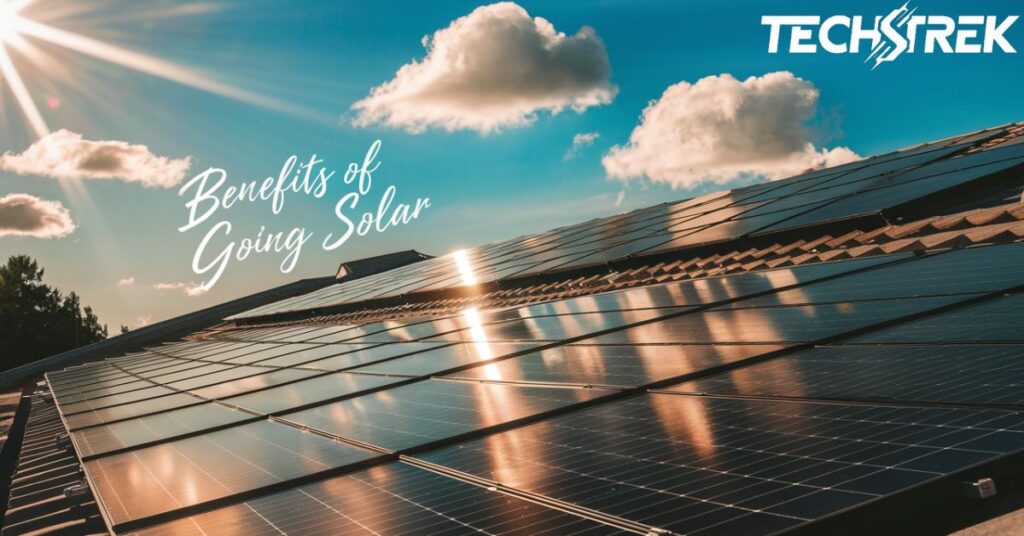
Adopting solar energy for your home offers numerous advantages, both for your wallet and the environment. Let’s explore some of the key benefits of going solar.
Financial Savings
One of the most compelling reasons to go there is the potential for significant long-term savings on your energy bills. You can decrease or even eliminate your dependency on grid power by generating your own electricity.
Many homeowners see a substantial decrease in their monthly energy costs after installing these panels. These systems can offset your initial investment over time.
Environmental Impact
This energy is a clean, renewable power source that produces no greenhouse gas emissions during operation. Switching to it reduces your carbon footprint and helps combat climate change.
Additionally, this power doesn’t consume water or create noise pollution, making it an environmentally friendly choice for energy production.
Energy Independence
Installing it gives you more control over your energy production and consumption. This increased energy independence can protect you from rising utility costs and power outages.
With battery storage systems, you can even maintain power during grid failures, ensuring your home remains operational during emergencies.
Assessing Your Home’s Solar Potential
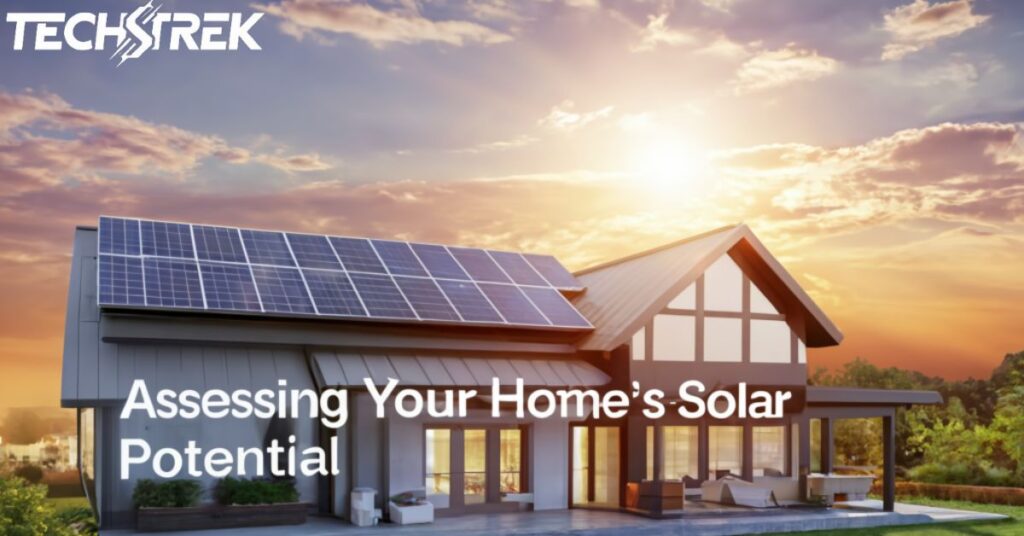
Before diving in it , it’s crucial to evaluate your home’s suitability for panels. Several factors can impact your potential and the efficiency of your system.
Roof Condition and Orientation
The condition, age, and orientation of your roof play a significant role in determining your home’s potential. Ideally, your roof should be in good condition and have a lifespan of at least 15-20 years.
South-facing roofs typically receive the most sunlight in the Northern Hemisphere, making them optimal for solar panel installation. It is also possible to install this panel on an east or west-facing roof.
Shading and Obstructions
Trees, buildings, or other structures that cast shadows on your roof can significantly reduce your panels’ efficiency. Conduct a shade analysis to identify potential obstructions.
Consider trimming trees or relocating panels to minimize shading issues. In some cases, you may need to explore alternative placement options, such as ground-mounted systems.
Local Climate and Weather Patterns
While these panels can work in various climates, your local weather patterns will impact your system’s overall efficiency. Areas with more sunny days typically yield higher energy production.
However, even cloudy regions can benefit from this energy. Modern panels are designed to capture diffuse sunlight, allowing them to generate electricity even on overcast days.
Read this Blog: Prince Narula Digital PayPal: Payment Strategies
Calculating Your Energy Needs
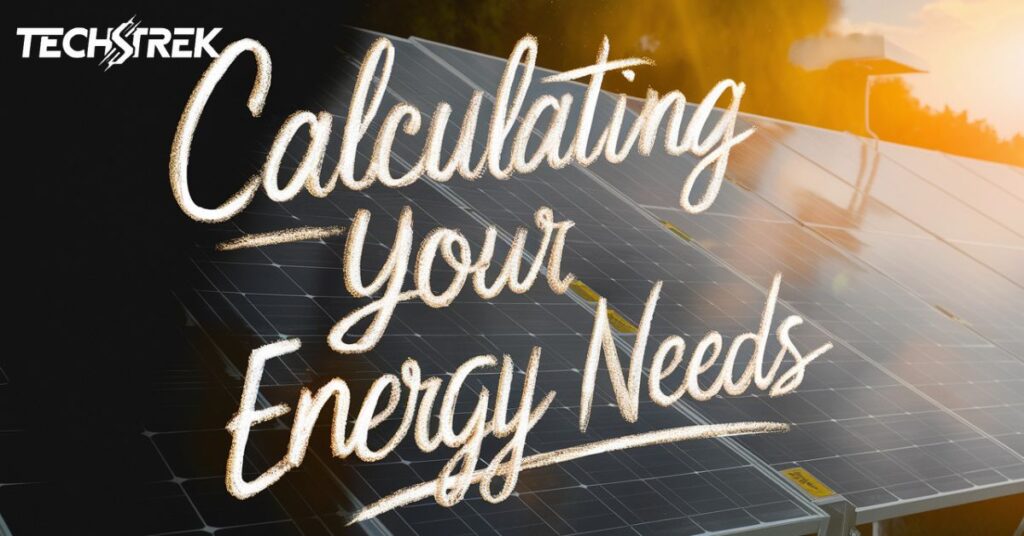
To determine the right size for your system, you’ll need to assess your household’s energy consumption. This step is crucial for designing a system that meets your needs without overproducing.
Analyzing Your Electricity Bills
Review your past 12 months of electricity bills to get a clear picture of your average energy consumption. Look for patterns in usage and note any seasonal variations.
Pay attention to both your kilowatt-hour (kWh) usage and your peak demand periods. This information will help you determine the appropriate size and configuration for your solar system.
Considering Future Energy Needs
Think about potential changes in your energy consumption over the next 5-10 years. Are you planning to add major appliances, switch to an electric vehicle, or make significant changes to your home?
Factor these potential increases in energy usage into your calculations to ensure your system can accommodate future needs.
Energy Efficiency Upgrades
Before sizing your system, consider implementing energy efficiency measures in your home. Improving insulation, upgrading to energy-efficient appliances, and adopting smart home technologies can reduce your overall energy consumption.
These upgrades can help you maximize the benefits of your solar installation and potentially reduce the size and cost of the system you need.
Choosing the Right Solar Equipment
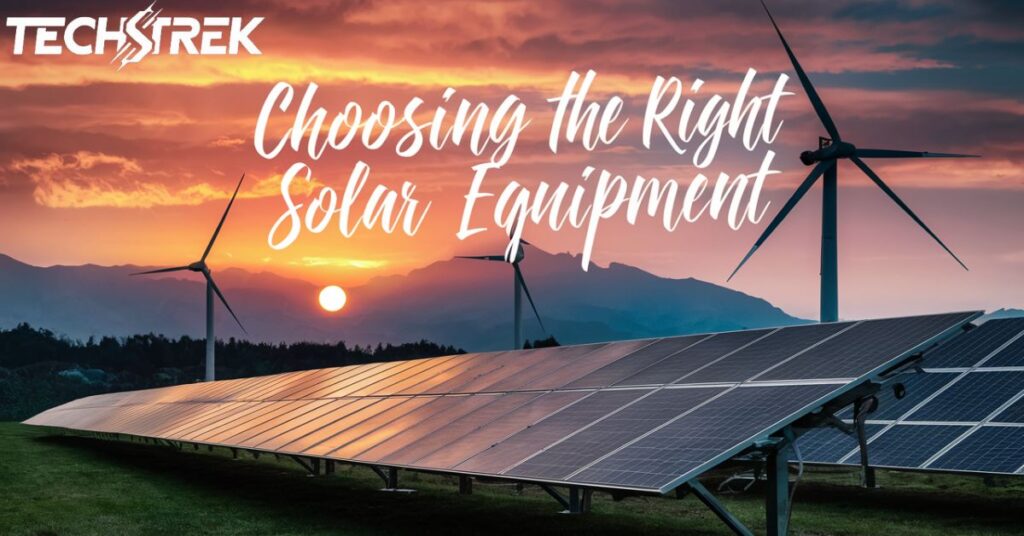
Selecting high-quality equipment is crucial for ensuring the long-term performance and reliability of your system. Here are some key components to consider:
Solar Panels
When choosing these panels, consider factors such as:
- Efficiency: Higher efficiency panels produce more electricity per square foot.
- Durability: Look for panels with strong warranties and proven track records.
- Aesthetics: Some panels are designed to blend in better with your roof.
Inverters
Inverters convert DC electricity from your panels into AC electricity for your home. Options include:
- String inverters: A single inverter for the entire system.
- Microinverters: Individual inverters for each panel.
- Power optimizers: A hybrid approach combining string inverters with panel-level optimization.
Battery Storage
If you’re considering energy storage, evaluate different battery options based on:
- Capacity: How much energy the battery can store.
- Power rating: How much electricity the battery can deliver at once.
- Warranty and lifespan: Look for batteries with long warranties and cycle life.
Solar Financing Options
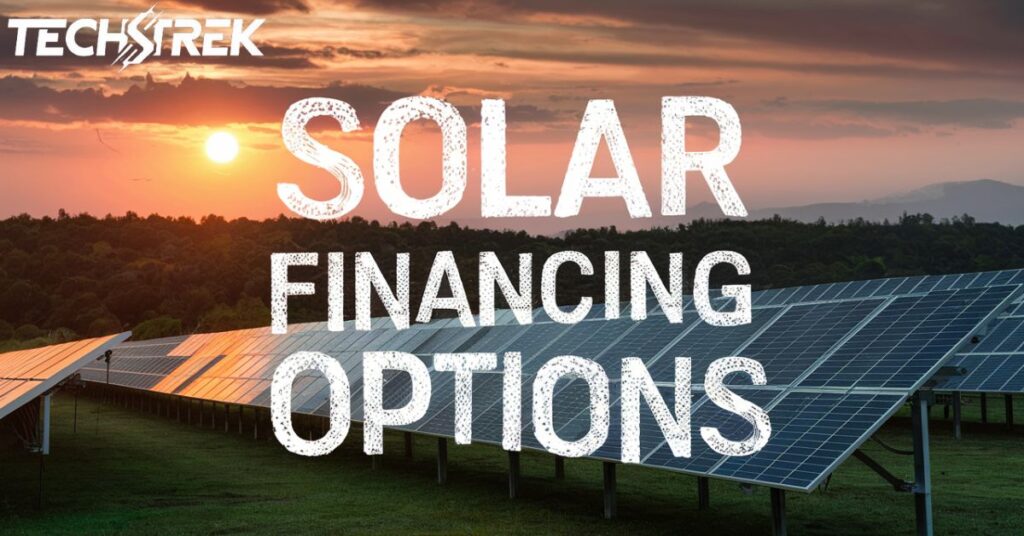
You can finance your solar installation in several ways. Understanding these options can help you choose the best approach for your financial situation.
Cash Purchase
Buying your system outright offers the highest long-term savings and quickest return on investment. While it requires a significant upfront cost, you’ll own the system and all its benefits immediately.
This option allows you to take full advantage of available tax credits and incentives, maximizing your financial benefits.
Solar Loans
Solar loans allow you to finance your system over time, often with low-interest rates and flexible terms. These loans can be secured (using your home as collateral) or unsecured.
With a solar loan, you can start saving on energy costs immediately while paying off the system over time. You’ll still be eligible for tax credits and incentives as the system owner.
Solar Leases and Power Purchase Agreements (PPAs)
Leases and PPAs involve a third party owning and maintaining this system on your roof. You pay a monthly fee to use the electricity generated by the panels.
These options require little to no upfront cost but offer lower long-term savings compared to ownership. Additionally, you may not be eligible for certain tax credits and incentives.
Solar Incentives and Tax Credits
Taking advantage of available incentives can significantly reduce the cost of going solar. Here’s a brief overview of common incentives:
- Federal Investment Tax Credit (ITC): A federal tax credit for a percentage of your cost.
- State and local incentives: Many states and municipalities offer additional tax credits, rebates, or grants.
- Net metering: Programs that allow you to sell excess electricity back to the grid.
- Solar Renewable Energy Certificates (SRECs): Some states allow you to sell certificates for the clean energy your system produces.
| Incentive Type | Description | Typical Value |
| Federal ITC | Tax credit based on system cost | 26% of system cost (as of 2023) |
| State Tax Credit | Additional state-level tax credit | Varies by state (0-25%) |
| Local Rebates | Cash rebates from utilities or local governments | $0.10 to $1.50 per watt |
| Net Metering | Credit for excess energy sent to the grid | Retail rate of electricity |
| SRECs | Certificates sold for clean energy production | Varies by market ($5-$300 per MWh) |
The Solar Installation Process
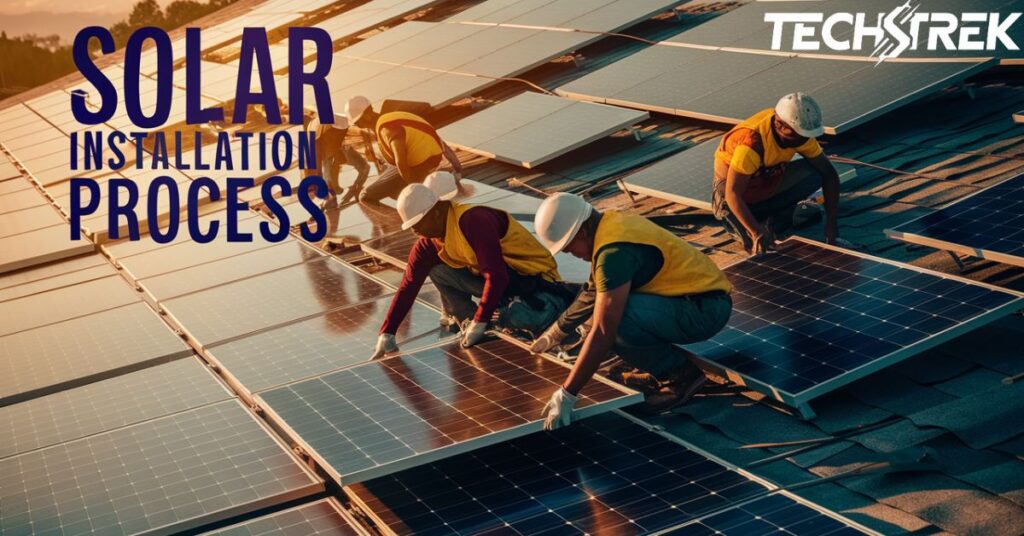
Understanding this installation process can help you prepare for what to expect. Here’s a general overview of the steps involved:
- Site assessment and system design
- Obtaining necessary permits and approvals
- Scheduling the installation
- Installing mounting equipment and panels
- Connecting the electrical components
- Final inspection and utility approval
- System activation and monitoring setup
The entire process typically takes 1-3 months from signing a contract to system activation, depending on local regulations and permitting processes.
Maintaining Your Solar System
Solar panels are relatively low-maintenance, but some upkeep is required to ensure optimal performance:
- Regular cleaning: Rinse panels with water to remove dust and debris.
- Visual inspections: Check for damage or loose connections periodically.
- Monitoring system performance: Use monitoring apps to track energy production.
- Professional maintenance: Schedule occasional check-ups with a solar professional.
Common Concerns and Misconceptions
Let’s address some frequent concerns and misconceptions about residential solar:
- “Solar doesn’t work in cold or cloudy climates”: Modern panels can generate electricity even in less-than-ideal conditions.
- “Solar will damage my roof”: Proper installation by professionals should not cause roof damage.
- “Solar is too expensive”: While there is an upfront cost, long-term savings often outweigh the initial investment.
- “Solar panels require a lot of maintenance”: Solar systems are generally low-maintenance and designed to last for decades.
Conclusion
Going solar is a significant decision that can offer substantial benefits for homeowners. By reducing your reliance on fossil fuels and lowering your energy costs, solar power can be a smart investment in your home and the environment.
As you consider making the switch to solar energy, take the time to thoroughly research your options, assess your home’s solar potential, and consult with reputable professionals. With careful planning and the right system, you can enjoy clean, renewable energy for decades to come.
Remember this technology continues to advance, making systems more efficient and affordable. By staying informed and working with trusted experts, you can make the most of your investment and contribute to a cleaner, more sustainable future.
Frequently Asked Questions
How long do solar panels last?
Most of them are designed to last 25-30 years, with many continuing to produce electricity beyond this timeframe.
Can I go off-grid with solar panels?
Yes, but it requires careful planning, significant battery storage, and possibly backup power sources to ensure reliable energy supply.
Will solar panels work during a power outage?
Grid-tied systems typically shut off during outages for safety reasons. Systems with battery backup can provide power during outages.
How much do solar panels cost?
The cost varies depending on system size, location, and equipment quality. Average costs range from $10,000 to $30,000 before incentives.
How long does it take to recoup the investment in solar panels?
The payback period typically ranges from 5-15 years, depending on your energy usage, local electricity rates, and available incentives.






